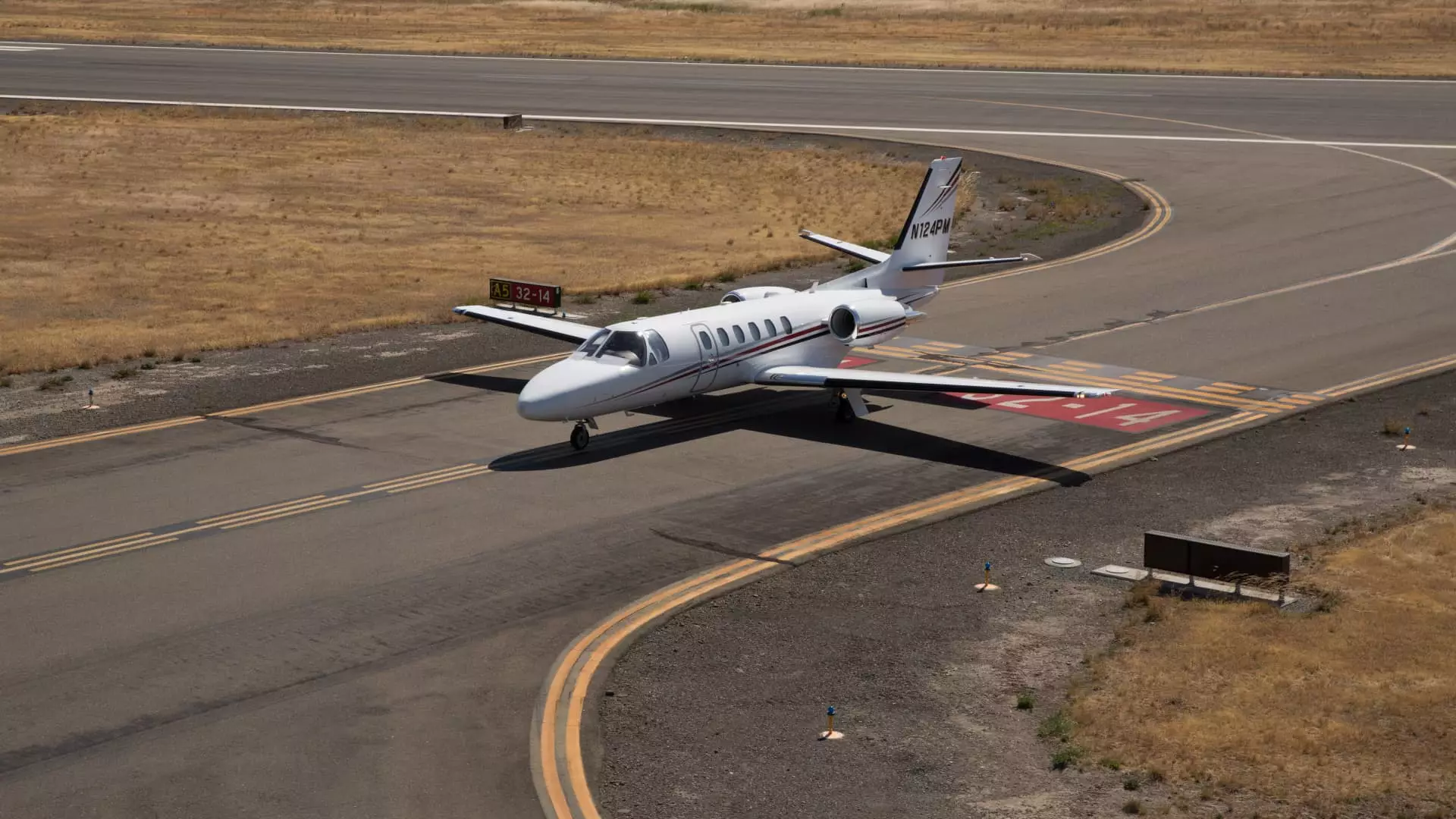The once-thriving business aviation sector is now facing unprecedented challenges, as consumer confidence continues its sharp decline. Recent data from Barclays reveals stark figures that highlight a drastic 49% drop in customer interest concerning business jet acquisitions, a troubling signal of the industry’s current state. The survey, carried out from April 9 to 15, collected insights from 65 industry professionals, shedding light on the rapidly changing dynamics of air travel demand. If the previous months had given any indication of resilience, the latest findings unambiguously show that even affluent travelers are retreating in their spending habits, illustrating a broader trend of anxiety affecting even the wealthiest segments of society.
A Blunt Index of Decline
The Barclays Business Jet Indicator survey provides a telling composite score that tracks various metrics, assessing the health of the market. From mid-March to mid-April, the overall score plummeted from 52 to a mere 40, with every metric except inventory levels recognizing a downturn. The 23% decline, marked as the most significant since the COVID-19 pandemic, paints a distressing picture for manufacturers and brokers alike. The harsh reality is that a composite score of 40 suggests more than a slowdown; it signals that the dollar value of new aircraft orders lag significantly behind fulfilling current ones, leaving many in the industry wondering where the recovery will come from.
The Tariff Trap: An Albatross Around the Neck
Industry sentiment is further undermined by the looming threat of tariffs, a concern echoed resoundingly by survey participants. A staggering 93% of respondents forecast a negative impact on demand due to tariffs, a point that cannot be overlooked. The uncertainty surrounding international trade relations and the implementation of tariffs creates a paralyzing atmosphere for potential buyers. With nearly half of survey respondents saying that interest in purchasing business jets had deteriorated since March, it’s evident that apprehensions surrounding operational costs are curtailing the once-robust appetite for luxury air travel. It’s ironic that the sector, which seemed poised for rapid growth, now grapples with fears rooted not in the luxury of the aircraft itself, but in the regulations and external factors that can quickly tarnish the allure of jet ownership.
The Mixed Bag of Used Jets
Even in the used jet sector, the outlook remains grim. A significant 67% of respondents expressed pessimism about the demand for pre-owned aircraft, expecting a negative influence on this market segment as well. Despite the gloom, a slim silver lining appears with about 27% anticipating a slight uptick in interest for used jets. This divergence underscores an ongoing complexity in consumer behavior; it illustrates a market struggling between the persisting allure of luxury experiences and the tightening grip of fiscal caution. As wealthy individuals reevaluate their financial priorities in a turbulent economic landscape, the dream of owning a private jet is becoming less attainable for many.
Legislative Lifelines or False Hopes?
While the news appears bleak, there could be a legislative lifeline that might alleviate some pressures on the industry. Proposed budget resolutions aimed at extending provisions from the Tax Cuts and Jobs Act could provide a crucial encouragement for businesses considering the purchase of new jets. With provisions allowing for immediate deductions of eligible equipment purchases, companies could regain their footing if these deductions are applied retroactively. The potential revival of benefits has sparked optimism among some, yet the looming question remains whether such measures will be enacted swiftly enough to combat the plummeting interest in the market.
Ultimately, the business jet industry stands at a precarious crossroads defined by uncertainty and economic anxiety. As the indicators reveal a sharp decline in demand, it’s clear the path to recovery will require more than just fleeting legislative measures. Without a concerted effort to rebuild consumer confidence and reestablish faith in the market, the skies might remain ominously empty for some time to come.

Leave a Reply